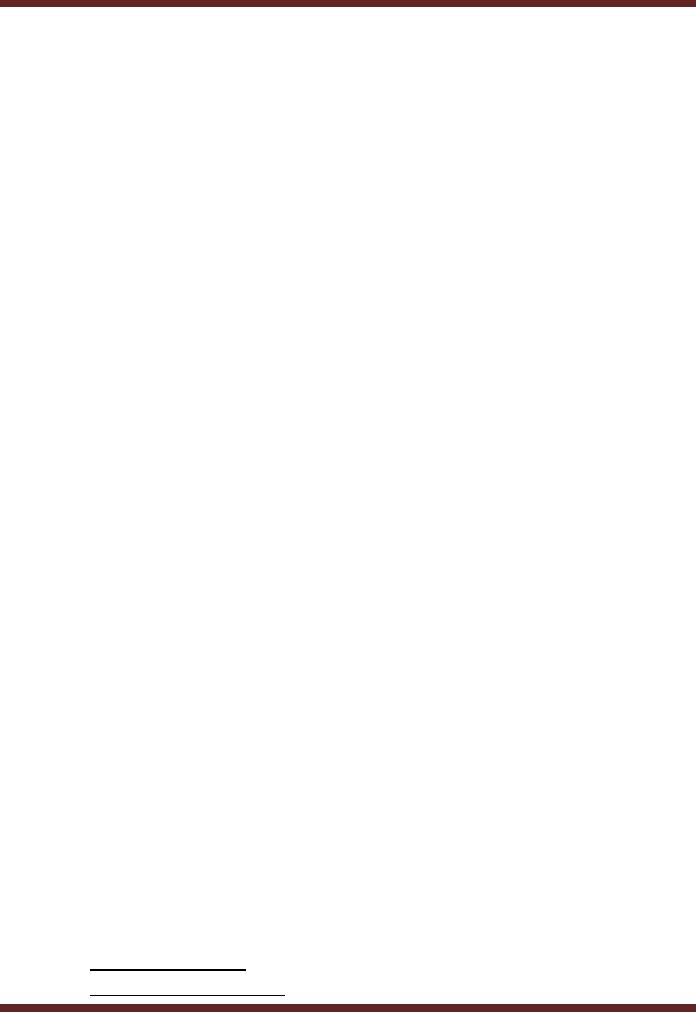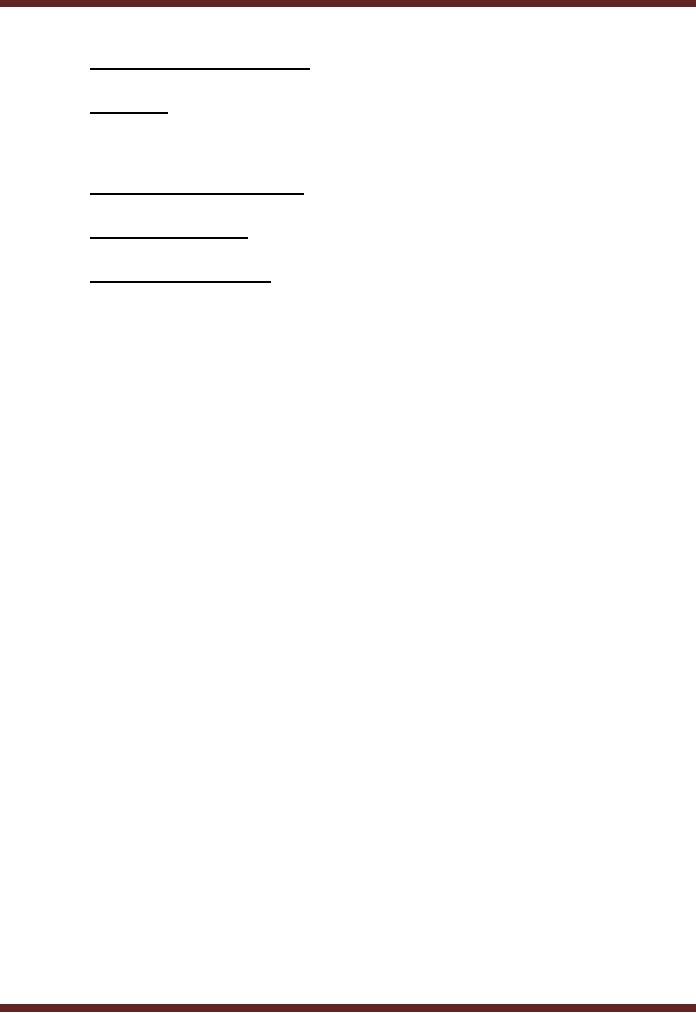 |

VU
Information
System (CS507)
LESSON
22
System
Analysis
System
analysis can be defined simply
as: "The study of business
problem domain to recommend
improvements
and specify the business
requirements for the
solution."
Or
alternatively as:
"A
problem solving technique that decomposes
a system into its component
pieces for the purpose
of
studying,
how well those component
parts work and interact to
accomplish their purpose."
Both
the definitions highlight following
important points:
·
System
analysis helps to create an understanding
of the business processes, their linkage
with
one
another, the parameters governing the
data flow within the
business, the controls and
checks
built into the processes and
the reporting needs in a business
where a problem
exists
or for
which the software needs to be
designed.
·
System
analysis creates the understanding and
lays out the necessary relationships
that will
assist
in defining a solution to the problem or
the design of the proposed software that
will
meet
the user needs.
These
two points may be understood as
providing a means for undertaking the
following tasks:
·
A
technique to map the system under
study.
·
To
drill down into the various
aspects of the business process
without losing sight of the
complete
system.
·
To
understand the Workability/Functionality of the
subsystems and their role in
achieving the
objectives
of the system as well as controls and
checks in place.
·
To
establish the relationship or Level of
interaction of each system
with other components of
the
system.
22.1
Computerized vs. Manual
environment
Information
systems are designed and
developed for both types of environments.
System analysis is done in
both
situations covering business processes
and flow of documents which
include:
·
Documents
being prepared to record
transactions
·
Point
of Origin of the data and
documents
·
Who is
responsible for
originating
·
Destination/filing
point/ultimate storage
·
Relationships
between various divisions of the business
in terms of data being received
and
recorded
from different transactions,
financial and
non-financial
·
Controls
devised to ensure accuracy,
integrity and reliability of
data
·
Reports
generated, frequency and
distribution thereof to various
users
The
difference between the manual and
computerized environment arises
due to the following
reasons,
quite
simply because of the different nature of
the environments:
·
Logical
access control issues
in computerized environment.
·
Duplication
of clerical work generally
observed in a manual environment is
eliminated in
92

VU
Information
System (CS507)
the
computerized environment.
·
Automatic
generation of specified
reports: In a
computerized environment as opposed to
manual
data
compilation.
·
Data
integrity is
more fully secured in a
computerized environment with
addition or authorized
changes
in data being automatically updated for
all purposes through a
single button effort
as
opposed
to making changes or updating in each
register or record affected by the
same in a
manual
environment.
·
Drill
down function to conduct
analysis of
recorded data is available in a
computerized environment
as
opposed to undertaking a manual analysis
of all data.
·
Flexibility
of presenting data in
desired or different format
including using specified
data to be
shown
graphically is available in computerized
environment.
·
Data
Security and confidentiality
can be
assured to a higher degree in a
computerized
environment.
22.2
Systems Analyst
"These
are knowledge workers who facilitate the
development of information systems and
computer
applications by
bridging the communications gap
that exists between non-technical
system users, and
System
designers and developers."
Why
do we need Systems
Analysts?
Systems
analysts work as a link
between Business people, & Computer
Programmers. Business People
may
define the
business to be computerized, i.e.
establish scope of computerization.
However, they may not
fully
understand the capabilities and
limitations of modern information
technology.
Computer
programmers apply information technology to
build information systems
which solves these
problems
but need not fully
understand the business usages they
are computerizing or supporting.
Systems
Analysts due to their
expertise in development, knowledge of business
processes, awareness of
industry
best practices, bridge the gap by
translating the scope of computerization into
how the systems will
handle
the transactional flows and the
relationship between the various aspects
of the business for the
programmers
whilst keeping the overall objectives
and requirements, both corporate
and IT related in
perspective.
22.3
System Design
System
Design maybe defined as "A
problem solving technique that
re-assembles a system's
components
back
into a complete system. This
may involve adding, changing
deleting pieces relative to the
original
system"
or alternatively as "the process or art of
defining the hardware and
software architecture,
components,
modules, interfaces, and
data for a computer system to
satisfy specified requirements."
Once
the existing system is analyzed and
user requirements established they
need to be either incorporated
into
the existing computerized system or
assist in the development of a new
system.
The
major components of system design
are:
·
Designing
usable and complete
input
·
Designing
well defined and usable
output with flexibility to redefine
presentation of outputs in
any
form.
·
Designing
file or database
93

VU
Information
System (CS507)
·
Designing
user interface (input screen
as it would be seen by the
user)
Designing
usable and complete
input
This
includes the design of input forms to
record data. The input forms
should be accurate, easy to
use,
consistent
and simple. Preferably the input forms
should not differ too
greatly from the manual
input forms
being
used by a business, as this can
help in the change management
process. All Primary
parameters
pertaining
to the various input forms must be
defined as part of the input
design e.g. basic
information
pertaining
to various entities suppliers, customers,
employees and chart of
accounts. There are cases
where
the
definitions were incomplete resulting in an
inability to produce a report on the
basis of an undefined
parameter.
Thus great care and
diligence is required when undertaking this
task.
Designing
well defined output
Various
considerations need to be kept in
mind while defining
parameters for desired
output. These
should
generally focus on:
·
Assuring
purposeful output
·
Providing
output as defined and required by
users
·
Providing
appropriate information
·
Assuring
distribution of output as per
client specified
requirements.
·
Minimizing
throughput time and Query time.
·
Ensuring
that output is available in
client required mode.
Many
business managers due to
lack of knowledge are not
able to visualize their
future reporting needs
or
even
define the end to end output
requirements or linkages as they assume
that these will be
produced
magically
by the computer. Unfortunately, the unexpressed
wishes cannot be turned into reality
unless
someone
at the design and development stage
had specified these needs
and the same have
been
accordingly
parameterized. In situations where this
is not done output designing
becomes an open ended
process,
which is neither time or cost beneficial
for the organization.
Designing
file or database
This
serves following
purposes:
·
Data
accessibility is ensured to the user is
ensured as and when
required.
·
Data
consistency data updates in
master file will automatically
update the data in the
whole
system.
·
Data is
efficiently processed &
stored.
·
Data
integrity that is Correctness of
data is ensured. This does
not mean that
incorrect
amounts
entered into the computer will be
automatically corrected by because the
computer
only
records what is entered but if
there is an error in entering pre-defined
parameters these
would
be corrected or thrown up as an error.
Further, the data processed
according to the pre-
defined
procedures every time around without
any change unless an error
has been caused to
the program
handling the data.
22.4
Designing user
interface
The
design of what the user sees on the
screen, that is, the
interface, while entering data should be
such that
94

VU
Information
System (CS507)
the
user is familiar with. The
information should be entered in a logical
sequence e.g., if a user
wants to add
an
employee to the employee's master
file, the information may be
entered in the following
sequence:
·
Employee
ID, which can either be
·
Generated
automatically by the system, or
·
Entered
manually by the user
·
Name
·
Address
·
Contact
information
·
Next
of kin
·
Grade
·
Designation
·
Salary
Details
95

VU
Information
System (CS507)
LESSON
23
Benefits
of Good System Design
·
Better
understanding by the developer of the system. A
properly designed system
helps in
elaborating
and understanding refined aspects of
system.
·
System
development becomes efficient. An error
free designed system saves
development time
since
it helps in understanding without
discussion.
·
A well
designed system also helps
in early detection of problems in critical
areas, if any.
·
Better
quality of reporting formats.
Modifications can be made
easily in the system.
·
Little
maintenance is required in the operations
phase.
23.1
System Analysis & Design
Methods
Two
approaches are followed for
system analysis and
design
·
Structured
analysis and design Which
includes various tools, such
as.
·
Flowcharting
·
Data
Flow diagram
·
ERD
·
Object
oriented analysis and
design
23.2
Structured Analysis and Design
Structured
analysis and design follows
a set of good practices and
generally accepted standards.
Proper
documentation of
the system is made by following
standard rules.
23.3
Flow Chart
"A
schematic representation of a sequence of
operations as in a manufacturing process or
computer
program."
Introduction
Flowchart is the
most commonly used design
and analysis technique. The
diagrammatic presentation gives a
quick
understanding of the business processes
and flows.
Symbols
Although
there are many symbols
used proposed by various standards,
but we would discuss some of
the
most
commonly used symbols. Understanding
symbols representing functions, flows,
etc may be more
readily understood
by those who have some
knowledge of the symbols. From a
technical or academic
point
of view, we
have to know what symbols
are used for various
functions, etc.
96
Table of Contents:
- Need for information, Sources of Information: Primary, Secondary, Tertiary Sources
- Data vs. Information, Information Quality Checklist
- Size of the Organization and Information Requirements
- Hierarchical organization, Organizational Structure, Culture of the Organization
- Elements of Environment: Legal, Economic, Social, Technological, Corporate social responsibility, Ethics
- Manual Vs Computerised Information Systems, Emerging Digital Firms
- Open-Loop System, Closed Loop System, Open Systems, Closed Systems, Level of Planning
- Components of a system, Types of Systems, Attributes of an IS/CBIS
- Infrastructure: Transaction Processing System, Management Information System
- Support Systems: Office Automation Systems, Decision Support Systems, Types of DSS
- Data Mart: Online Analytical Processing (OLAP), Types of Models Used in DSS
- Organizational Information Systems, Marketing Information Systems, Key CRM Tasks
- Manufacturing Information System, Inventory Sub System, Production Sub System, Quality Sub system
- Accounting & Financial Information Systems, Human Resource Information Systems
- Decision Making: Types of Problems, Type of Decisions
- Phases of decision-making: Intelligence Phase, Design Phase, Choice Phase, Implementation Phase
- Planning for System Development: Models Used for and Types of System Development Life-Cycle
- Project lifecycle vs. SDLC, Costs of Proposed System, Classic lifecycle Model
- Entity Relationship Diagram (ERD), Design of the information flow, data base, User Interface
- Incremental Model: Evaluation, Incremental vs. Iterative
- Spiral Model: Determine Objectives, Alternatives and Constraints, Prototyping
- System Analysis: Systems Analyst, System Design, Designing user interface
- System Analysis & Design Methods, Structured Analysis and Design, Flow Chart
- Symbols used for flow charts: Good Practices, Data Flow Diagram
- Rules for DFD’s: Entity Relationship Diagram
- Symbols: Object-Orientation, Object Oriented Analysis
- Object Oriented Analysis and Design: Object, Classes, Inheritance, Encapsulation, Polymorphism
- Critical Success Factors (CSF): CSF vs. Key Performance Indicator, Centralized vs. Distributed Processing
- Security of Information System: Security Issues, Objective, Scope, Policy, Program
- Threat Identification: Types of Threats, Control Analysis, Impact analysis, Occurrence of threat
- Control Adjustment: cost effective Security, Roles & Responsibility, Report Preparation
- Physical vs. Logical access, Viruses, Sources of Transmissions, Technical controls
- Antivirus software: Scanners, Active monitors, Behavior blockers, Logical intrusion, Best Password practices, Firewall
- Types of Controls: Access Controls, Cryptography, Biometrics
- Audit trails and logs: Audit trails and types of errors, IS audit, Parameters of IS audit
- Risk Management: Phases, focal Point, System Characterization, Vulnerability Assessment
- Control Analysis: Likelihood Determination, Impact Analysis, Risk Determination, Results Documentation
- Risk Management: Business Continuity Planning, Components, Phases of BCP, Business Impact Analysis (BIA)
- Web Security: Passive attacks, Active Attacks, Methods to avoid internet attacks
- Internet Security Controls, Firewall Security SystemsIntrusion Detection Systems, Components of IDS, Digital Certificates
- Commerce vs. E-Business, Business to Consumer (B2C), Electronic Data Interchange (EDI), E-Government
- Supply Chain Management: Integrating systems, Methods, Using SCM Software
- Using ERP Software, Evolution of ERP, Business Objectives and IT
- ERP & E-commerce, ERP & CRM, ERP– Ownership and sponsor ship
- Ethics in IS: Threats to Privacy, Electronic Surveillance, Data Profiling, TRIPS, Workplace Monitoring